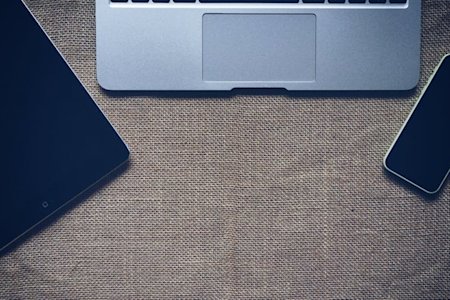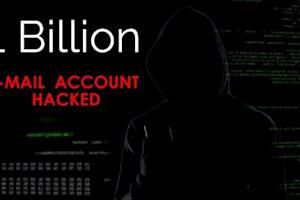En nuestro mundo cada vez más interconectado, la capacidad de acceder y gestionar dispositivos de forma remota se ha convertido en una parte vital de la vida personal y profesional. Los dispositivos remotos nos permiten realizar tareas, prestar soporte y acceder a información desde cualquier lugar y en cualquier momento. Esta capacidad es una necesidad para las empresas que buscan mantener la productividad y para las personas que buscan mantenerse conectadas.
Desde los equipos de soporte de TI que gestionan las redes de la empresa hasta los docentes que imparten clases a estudiantes remotos, los dispositivos remotos han revolucionado la forma en que trabajamos e interactuamos. Ofrecen la flexibilidad para trabajar desde casa, solucionar problemas sin estar físicamente presente y colaborar con equipos de todo el mundo. Sin embargo, estas ventajas conllevan desafíos, particularmente en la gestión y protección efectiva de dispositivos remotos.
Este blog profundizará en qué son los dispositivos remotos, proporcionará ejemplos y discutirá sus principales ventajas y retos de gestión.
¿Qué son los dispositivos remotos?
Los dispositivos remotos son dispositivos o sistemas electrónicos a los que se puede acceder, supervisar y controlar desde una ubicación distante. Esta interacción remota es posible a través de internet u otras conexiones de red, lo que permite a los usuarios operar estos dispositivos como si estuvieran físicamente presentes.
El objetivo principal de los dispositivos remotos es proporcionar comodidad y flexibilidad. Permiten a los usuarios trabajar desde cualquier lugar, prestar soporte a clientes o compañeros en diferentes áreas geográficas y gestionar sistemas sin necesidad de estar de forma presencial. Esta capacidad es esencial para las empresas, los profesionales de TI, los docentes e incluso los usuarios cotidianos que necesitan un acceso sin interrupciones a su tecnología, independientemente de dónde se encuentren.
Aspectos Clave de los Dispositivos Remotos
Acceso remoto: Los dispositivos remotos se pueden acceder desde otra ubicación a través de internet o una red interna. Esto permite a los usuarios o equipos de TI conectarse a los sistemas sin estar físicamente presentes.
Control y monitoreo: Los usuarios autorizados pueden controlar dispositivos remotos en tiempo real, ejecutar diagnósticos y monitorear el rendimiento del sistema. Esto es esencial para gestionar endpoints, servidores o sistemas no supervisados.
Acceso y transferencia de datos: Los dispositivos remotos permiten el acceso seguro a archivos, aplicaciones y bases de datos, facilitando compartir recursos y realizar actualizaciones desde cualquier lugar.
Seguridad y autenticación: El acceso a dispositivos remotos generalmente incluye características de seguridad como cifrado, autenticación multifactor y permisos basados en roles para proteger contra el uso no autorizado.
Compatibilidad multiplataforma: Los dispositivos remotos pueden incluir una amplia gama de endpoints (Windows, Mac, Linux, iOS, Android y más), permitiendo una gestión fluida en entornos mixtos.
Ejemplos de dispositivos remotos y sus aplicaciones
Los dispositivos remotos abarcan una amplia gama de tecnologías, cada una sirviendo propósitos únicos y ofreciendo diversas funcionalidades. Aquí hay algunos tipos comunes y ejemplos de dispositivos remotos que se han vuelto integrales en nuestras vidas diarias:
Ordenadores de sobremesa y portátiles: los profesionales pueden acceder a los escritorios de su oficina desde casa o mientras viajan, lo que garantiza una productividad continua. Los usuarios pueden conectarse a sus PC domésticos para recuperar archivos, ejecutar software o realizar otras tareas de forma remota.
Teléfonos inteligentes y tabletas: el acceso remoto a teléfonos móviles y tabletas permite a los usuarios gestionar aplicaciones, enviar mensajes y realizar otras funciones como si estuvieran sosteniendo el dispositivo.
Servidores: los administradores de TI pueden gestionar y solucionar problemas de los servidores web de forma remota, lo que garantiza el tiempo de actividad y el rendimiento sin estar físicamente presentes. El acceso remoto a los servidores de bases de datos permite el mantenimiento, las actualizaciones y la recuperación de datos desde cualquier ubicación.
IoT Dispositivos: Acceso remoto a dispositivos IoT, como terminales POS, señalización digital, maquinaria y sensores, ayuda a monitorear el rendimiento, predecir necesidades de mantenimiento y mejorar la eficiencia.
Dispositivos de red: los gestores de redes pueden configurar y solucionar problemas de rúteres y switches de forma remota, lo que garantiza la estabilidad y el rendimiento de la red.
Máquinas virtuales: los desarrolladores pueden acceder y gestionar máquinas virtuales que alojan entornos de desarrollo, lo que facilita la programación y las pruebas remotas.
Estos ejemplos ilustran la versatilidad e importancia de los dispositivos remotos en diversos contextos. Ya sea para uso personal, tareas profesionales o aplicaciones industriales, los dispositivos remotos permiten una conectividad y un control perfectos, transformando la forma en que interactuamos con la tecnología.
Principales ventajas del uso de dispositivos remotos
El uso de dispositivos remotos aporta una serie de beneficios que mejoran la productividad, la flexibilidad y la eficiencia en diversos contextos. Estas son algunas de los principales ventajas de utilizar dispositivos remotos:
1. Mayor flexibilidad y movilidad
Los dispositivos remotos permiten a los usuarios trabajar desde cualquier lugar, rompiendo las barreras de los límites geográficos. Esta flexibilidad es especialmente valiosa para los empleados que viajan con frecuencia, trabajan desde casa o tienen la necesidad de acceder a sistemas fuera del horario habitual de oficina.
2. Mayor productividad
Con el acceso remoto a herramientas y sistemas esenciales, los usuarios pueden completar tareas de manera más eficiente. Los profesionales de TI pueden realizar mantenimiento, actualizaciones y resolución de problemas sin necesidad de estar de forma presencial, lo que reduce el tiempo de inactividad y aumenta el tiempo de actividad del sistema. Del mismo modo, los empleados pueden acceder a los archivos de trabajo y a las aplicaciones desde cualquier lugar, lo que permite un flujo de trabajo y una colaboración continuos.
3. Ahorro de costes
Los dispositivos remotos pueden reducir significativamente los costes operativos. Las empresas pueden ahorrar en gastos de viaje, ya que el soporte y la gestión de TI se pueden realizar de forma remota. Además, el trabajo remoto puede reducir la necesidad de grandes espacios de oficina y los costes generales asociados.
4. Continuidad del negocio
En caso de interrupciones como desastres naturales, pandemias u otras emergencias, los dispositivos remotos garantizan que las operaciones comerciales puedan continuar con una interrupción mínima. Los empleados pueden acceder a sistemas y datos críticos desde ubicaciones seguras, manteniendo la productividad y reduciendo el impacto de eventos imprevistos.
5. Gestión eficiente de TI
Los departamentos de TI se benefician enormemente de la capacidad de gestionar dispositivos de forma remota. El mantenimiento rutinario, las actualizaciones de software y la solución de problemas se pueden realizar sin necesidad de acceso físico a los dispositivos. Esta capacidad agiliza las operaciones de TI, reduce los tiempos de respuesta y mejora la fiabilidad general del sistema.
En resumen, el uso de dispositivos remotos ofrece numerosas ventajas que se adaptan al entorno de trabajo moderno y dinámico. Al aprovechar estas ventajas, las empresas y las personas pueden lograr una mayor eficiencia, flexibilidad y resiliencia en sus operaciones diarias.
Qué es la Gestión de Dispositivos Remotos
La gestión de dispositivos remotos se refiere al proceso de monitorear, controlar y mantener dispositivos desde una ubicación centralizada a través de una red. Permite a los equipos de TI realizar actualizaciones, solucionar problemas, aplicar políticas de seguridad y gestionar el acceso de usuarios sin necesidad de proximidad física al dispositivo. Este enfoque ayuda a las organizaciones a mejorar la eficiencia operativa, reducir el tiempo de inactividad y asegurar operaciones de TI seguras y escalables.
Cómo Funciona la Gestión de Dispositivos Remotos
Registro de dispositivos: Los dispositivos se registran en una plataforma de gestión remota utilizando agentes de instalación, perfiles de configuración o enlaces de registro. Este paso asegura que el sistema pueda reconocer y comunicarse con cada endpoint.
Autenticación y control de acceso: Los administradores establecen permisos y protocolos de seguridad como autenticación multifactor y acceso basado en roles. Esto asegura que solo los usuarios autorizados puedan acceder o gestionar dispositivos remotos.
Monitoreo y verificaciones de estado: El sistema monitorea continuamente el rendimiento del dispositivo, la conectividad, el estado del software y las métricas de cumplimiento. Los equipos de TI reciben visibilidad en tiempo real de todos los puntos finales gestionados.
Control remoto, control a distancia y soporte: Los técnicos pueden acceder remotamente a los dispositivos para solucionar problemas, actualizar software o cambiar configuraciones. Esto reduce la necesidad de visitas in situ y permite tiempos de respuesta más rápidos.
Automatización y actualizaciones: Las tareas rutinarias como el parcheo de software, los escaneos del sistema y la aplicación de políticas pueden ser automatizadas en todos los dispositivos. Esto asegura consistencia y ahorra tiempo administrativo.
Registro y reporte: Todas las actividades se registran para fines de auditoría. Los informes detallados ayudan con el cumplimiento, el análisis de rendimiento y la optimización continua del entorno de TI.
Desafíos clave en la gestión de un dispositivo remoto
Si bien las ventajas de usar dispositivos remotos son sustanciales, gestionarlos de manera efectiva presenta varios desafíos. Abordar estos desafíos es crucial para garantizar operaciones remotas fluidas y seguras. Estos son algunos de los principales desafíos en la gestión de dispositivos remotos:
Preocupaciones de seguridad: uno de los principales retos a la hora de gestionar dispositivos remotos es garantizar la seguridad. La protección de la información confidencial requiere medidas de seguridad férreas, como el cifrado, la autenticación multifactor y las actualizaciones de seguridad periódicas.
Problemas de conectividad: una conectividad a internet fiable es esencial para la gestión remota de dispositivos. Las conexiones deficientes o inestables pueden interrumpir las sesiones remotas, lo que provoca pérdidas de productividad y frustración.
Compatibilidad de dispositivos: la gestión de una amplia gama de dispositivos remotos, incluidos diferentes sistemas operativos y configuraciones de hardware, puede ser compleja.
Supervisióndel rendimiento: supervisar el rendimiento de los dispositivos remotos es todo un reto, especialmente cuando se trata de una gran cantidad de dispositivos repartidos en diferentes ubicaciones. Una gestión eficaz requiere herramientas que proporcionen métricas de rendimiento en tiempo real, que alerten a los administradores sobre posibles problemas antes de que se intensifiquen.
Formación y soporte al usuario: no todos los usuarios son expertos en tecnología, por lo que es esencial proporcionar una formación y un soporte adecuados para la gestión remota de dispositivos. Los usuarios deben comprender cómo acceder y controlar dispositivos remotos, solucionar problemas comunes y seguir las mejores prácticas de seguridad.
Actualizaciones de software y firmware: mantener los dispositivos remotos actualizados con las últimas actualizaciones de software y firmware es vital para la seguridad y el rendimiento. Las soluciones de actualización automatizada pueden ayudar a agilizar este proceso, garantizando que los dispositivos permanezcan actualizados sin intervención manual.
Privacidad y cumplimiento de datos: la gestión de dispositivos remotos suele implicar el manejo de datos confidenciales, que deben protegerse para cumplir con las regulaciones de privacidad como RGPD, HIPAA y otras. Garantizar el cumplimiento de estas regulaciones requiere prácticas estrictas de gestión de datos, soluciones de almacenamiento seguro y auditorías periódicas para verificar el cumplimiento de los requisitos legales.
Solución de problemas a distancia: diagnosticar y resolver problemas en dispositivos remotos puede ser más difícil que la resolución de problemas presenciales. Los equipos de soporte de TI necesitan herramientas avanzadas de acceso remoto que les permitan diagnosticar problemas, realizar reparaciones y restaurar la funcionalidad sin acceso físico al dispositivo.
Abordar estos desafíos requiere una combinación de herramientas potentes de acceso remoto, medidas de seguridad integrales, programas de formación efectivos y estrategias de gestión eficientes. Al abordar estos problemas de frente, las empresas pueden asegurarse de que sus dispositivos remotos se gestionen de manera efectiva, lo que permite operaciones remotas seguras y sin problemas.
Cómo gestionar dispositivos remotos de forma eficiente
La gestión eficaz de dispositivos remotos implica la implementación de una combinación de herramientas, estrategias y mejores prácticas para garantizar un acceso, una seguridad y un rendimiento sin problemas. A continuación, te explicamos cómo puedes gestionar tus dispositivos remotos:
Utiliza el potente software de acceso remoto
Invertir en un software de acceso remoto fiable es la piedra angular de una gestión eficaz de dispositivos remotos. Una solución como Splashtop ofrece funciones integrales, que incluyen acceso remoto seguro, supervisión en tiempo real y capacidades de soporte. Con Splashtop, puedes acceder y controlar fácilmente tus dispositivos desde cualquier lugar, lo que garantiza que tus operaciones se desarrollen sin problemas y sin limitaciones geográficas.
Implementa medidas de seguridad férreas
La seguridad es primordial cuando se gestionan dispositivos remotos. Asegúrate de que todas las conexiones remotas estén protegidas con cifrado y utiliza la autenticación multifactor para evitar el acceso no autorizado. Actualiza regularmente tu software y dispositivos para protegerte contra vulnerabilidades.
Centraliza la gestión
El uso de una consola de administración centralizada le permite supervisar todos tus dispositivos remotos desde una sola interfaz. Este enfoque simplifica el proceso de supervisión del rendimiento del dispositivo, la implementación de actualizaciones y la solución de problemas.
Proporciona formación y soporte al usuario
Equipa a tus usuarios con el conocimiento y las habilidades para gestionar sus dispositivos remotos de manera efectiva. Realiza sesiones de formación para educarlos sobre el uso de herramientas de acceso remoto, la solución de problemas comunes y el seguimiento de las mejores prácticas de seguridad. Además, asegúrate de que un servicio de atención al cliente amable esté disponible para ayudar a los usuarios cuando tengan problemas.
Establece políticas y procedimientos claros
Desarrolla y aplica políticas y procedimientos claros para el uso de dispositivos remotos. Estos deben incluir pautas para el acceso seguro, la protección de datos y el uso aceptable. Asegúrate de que todos los usuarios conozcan estas políticas y comprendan sus responsabilidades. Revisa y actualiza periódicamente tus políticas para registrar la evolución de las amenazas de seguridad y los avances tecnológicos.
Copia de seguridad y recuperación ante desastres
Implementa un claro protocolo de copia de seguridad y recuperación ante desastres para proteger tus datos y garantizar la continuidad del negocio en caso de fallos de dispositivos o ciberataques. Realiza copias de seguridad periódicas de los datos críticos y prueba tus procesos de recuperación para asegurarte de que funcionan como se espera.
Optimiza el rendimiento de la red
Una conexión a internet estable y rápida es crucial para una gestión eficaz de dispositivos remotos. Optimiza tu red para garantizar una latencia mínima y un acceso de alta velocidad para sesiones remotas.
Prácticas recomendadas para proteger dispositivos remotos
La seguridad de los dispositivos remotos es crucial para proteger los datos confidenciales y mantener la integridad de tu red. Estas son algunas de las mejores prácticas para garantizar la seguridad de tus dispositivos remotos:
Utiliza métodos de autenticación seguros: implementa la autenticación multifactor (MFA) para agregar una capa adicional de seguridad. Esto garantiza que, incluso si una contraseña se ve comprometida, se evita el acceso no autorizado. Por lo general, la MFA combina algo que el usuario conoce (contraseña) con algo que el usuario tiene (un dispositivo móvil o un token de seguridad) o algo que el usuario es (biometría).
Cifra la transmisión de datos: asegúrate de que todos los datos transmitidos entre dispositivos remotos y tu red estén cifrados. Utiliza protocolos seguros como SSL/TLS para proteger los datos en tránsito de ser interceptados y leídos por partes no autorizadas. Splashtop, por ejemplo, utiliza encriptación AES de 256 bits para proteger las sesiones remotas.
Mantén el software y el firmware actualizados: actualiza periódicamente todo el software y el firmware de los dispositivos remotos para parchear las vulnerabilidades y protegerte contra las últimas amenazas de seguridad. Habilita las actualizaciones automáticas siempre que sea posible para garantizar que los dispositivos permanezcan protegidos sin intervención manual.
Implementa controles de acceso férreos: limita el acceso a los dispositivos remotos solo a aquellos que lo necesiten. Utiliza controles de acceso basados en roles para asignar permisos en función del rol del usuario dentro de la organización. Esto minimiza el riesgo de acceso no autorizado y garantiza que los usuarios solo tengan acceso a los recursos que necesitan.
Realiza auditorías de seguridad periódicas: realiza auditorías de seguridad periódicas y evaluaciones de vulnerabilidades para identificar y abordar posibles debilidades en tu estrategia de gestión de dispositivos remotos. Esto incluye la revisión de los registros de acceso, la comprobación de intentos de acceso no autorizados y la garantía del cumplimiento de las políticas de seguridad.
Utiliza las soluciones de protección de puntos finales: implementa soluciones de protección de puntos finales, como software antivirus y antimalware, en todos los dispositivos remotos. Estas soluciones ayudan a detectar y mitigar las amenazas antes de que puedan causar daño. Asegúrate de que estas herramientas se actualicen periódicamente para protegerte contra amenazas nuevas y emergentes.
Forma a los usuarios sobre las mejores prácticas de seguridad: educa a los usuarios sobre la importancia de la seguridad y las mejores prácticas para proteger los dispositivos remotos. Esto incluye orientación sobre cómo crear contraseñas seguras, reconocer intentos de phishing e informar de actividades sospechosas. Las sesiones de formación periódicas pueden ayudar a reforzar estas prácticas y mantener la seguridad en primer lugar.
Al implementar estas mejores prácticas, puedes mejorar significativamente la seguridad de tus dispositivos remotos y proteger a tu organización de posibles amenazas. Aprovechar soluciones como Splashtop, que ofrece funciones de seguridad integrales, puede fortalecer aún más tu estrategia de gestión de dispositivos remotos y ofrecer tranquilidad.
Opta por Splashtop: la mejor opción para prestar soporte a dispositivos remotos
A medida que el trabajo remoto y la necesidad de una gestión eficiente de dispositivos continúan aumentando, es crucial seleccionar la solución de acceso remoto adecuada. Splashtop destaca como la mejor opción para prestar soporte a dispositivos remotos, ya que ofrece una plataforma potente y segura que satisface las diversas necesidades de las empresas, los profesionales de TI y los usuarios particulares.
¿Por qué elegir Splashtop?
Seguridad inigualable Splashtop prioriza tu seguridad con funciones avanzadas como el cifrado AES de 256 bits, la autenticación multifactor y el cumplimiento de estándares de la industria como RGPD e HIPAA.
Rendimiento superior Experimenta el acceso remoto de alto rendimiento con conexiones rápidas y fiables de Splashtop. Disfruta de una transmisión fluida y un control receptivo, lo que hace que sientas que estás trabajando directamente en el dispositivo remoto, da igual si vas a acceder a un ordenador de escritorio, un servidor o un dispositivo móvil.
Interfaz fácil de usar La interfaz intuitiva de Splashtop facilita la conexión y la gestión de dispositivos remotos. Con una navegación sencilla y herramientas completas, los usuarios pueden configurar y comenzar a usar Splashtop rápidamente sin una amplia formación o experiencia técnica.
Funciones integrales Splashtop ofrece una amplia gama de funciones adaptadas a diferentes casos prácticos, incluidos el soporte remoto, el trabajo remoto y la enseñanza remota. Desde la transferencia de archivos y la impresión remota hasta la compatibilidad con varios monitores y la grabación de sesiones, Splashtop proporciona todas las herramientas que necesitas para gestionar y prestar soporte a dispositivos remotos de manera efectiva.
Soluciones rentables Splashtop ofrece una rentabilidad excepcional con sus planes de precios rentables. Tanto si se trata de una pequeña empresa, una gran empresa o un usuario particular, Splashtop ofrece planes flexibles que se ajustan a tu presupuesto sin sacrificar la calidad y las funciones.
Excelente atención al cliente Benefíciate del equipo de atención al cliente de Splashtop, amable y bien informado. Tanto si tienes una pregunta técnica como si necesitas ayuda con la configuración, el equipo de soporte de Splashtop está preparado para ayudarte en cada paso del camino.
Comienza Tu Prueba Gratuita Hoy
Experimenta los beneficios de Splashtop de primera mano iniciando una prueba gratuita hoy. Averigua lo fácil y segura que puede ser la gestión remota de dispositivos con una solución en la que confían millones de usuarios en todo el mundo.
Más información sobre las soluciones de Splashtop.





